NevadaToday
Taking aim at wildfires in Nevada University research looks at how climate change, drought and land management affect forests and rangelands
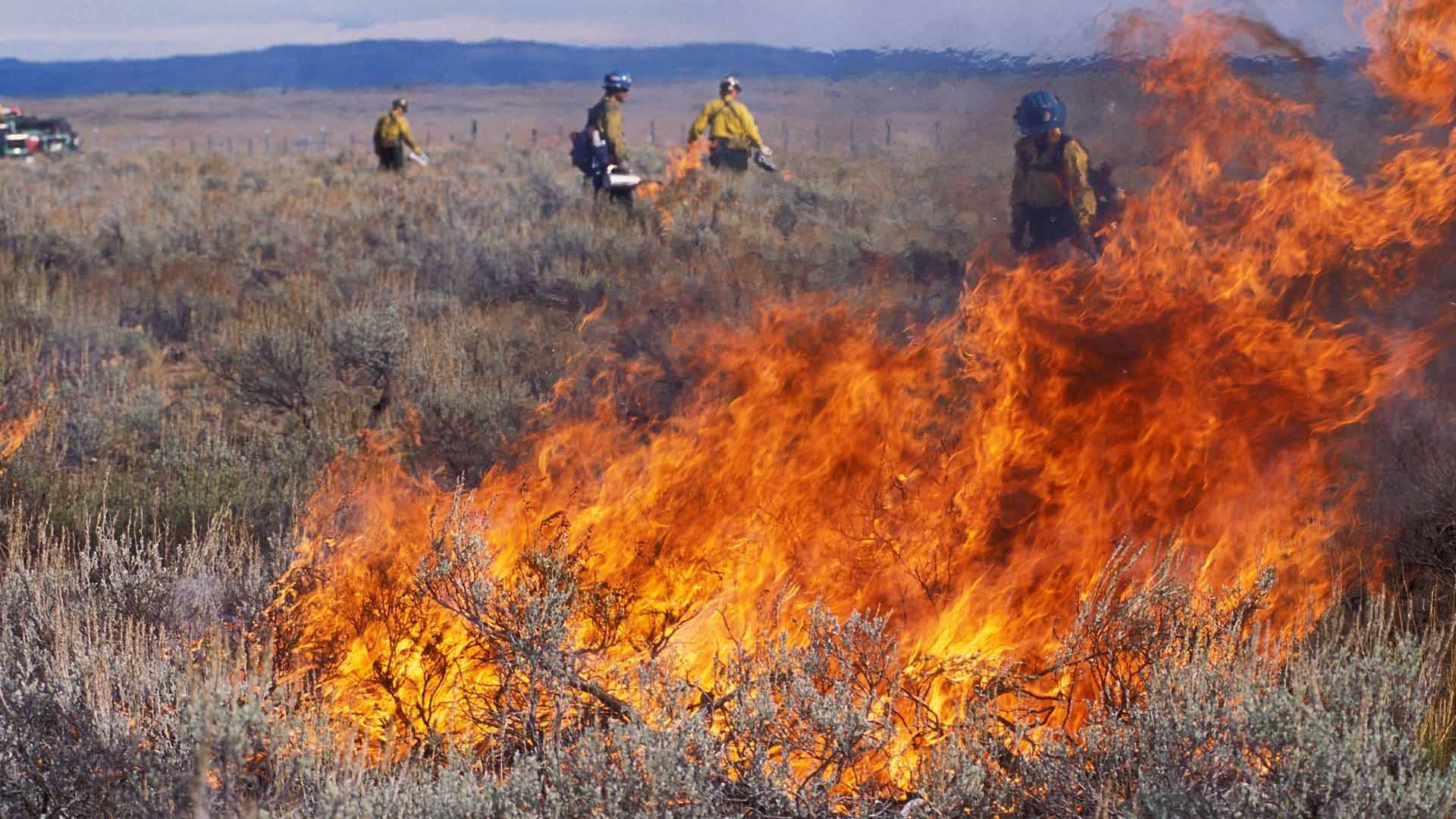
Taking aim at wildfires in Nevada
With wildland fires eating up the forests and rangelands of Nevada each summer and fire season now upon us, University of Nevada, Reno scientists in the College of Agriculture, Biotechnology & Natural Resources are examining how drought, climate change and land management will affect future fire activity and how fires can in turn influence plant, soil and hydrologic processes.
In 2016, a little over 265,000 acres statewide in Nevada burned from wildfires. In 2017, around 1.3 million acres burned, and in 2018, a little over a million acres burned, according to the National Interagency Fire Center in Boise, Idaho. They reported, in 2019, 562 fires burned 82,282 acres in Nevada, with 318 human-caused fires burning 18,801 acres and 244 lightning fires burning 63,481 acres.
As part of national and statewide initiatives, the University scientists are working to understand what drives increases in fire frequency, size and severity; how fires are changing ecosystem function in forests and rangelands; and what management actions can help reduce the negative ecological and economic impacts of fire.
“Our college faculty have for years been at the forefront of teaching, research, and Extension regarding rangeland, woodland and forest fires,” said Bill Payne, dean of the College of Agriculture, Biotechnology & Natural Resource at the University. “In recent years we have added numerous new faculty with expertise in different aspects of fire ecology, and we seek to integrate research, teaching, and Extension with a view towards greater knowledge, better policy prescriptions and improved, adaptive management practices.
“For example, the Experiment Station, led by Chris Pritsos, is funding at least five research projects on fire at the amount of $330,000, and our faculty have been very successful at attracting more than $1.25 million in extra-mural funding to fund research and Extension related to fire ecology and preparedness. We have a great many partners towards this end, including federal and state agencies, other colleges within the University; other universities; federal, state and local firefighters; and dozens of individual communities.”
One of the College’s longstanding outreach programs, Living With Fire, a collaborative effort among federal, state and local firefighting and resource management agencies, is managed by the University of Nevada, Reno Extension.
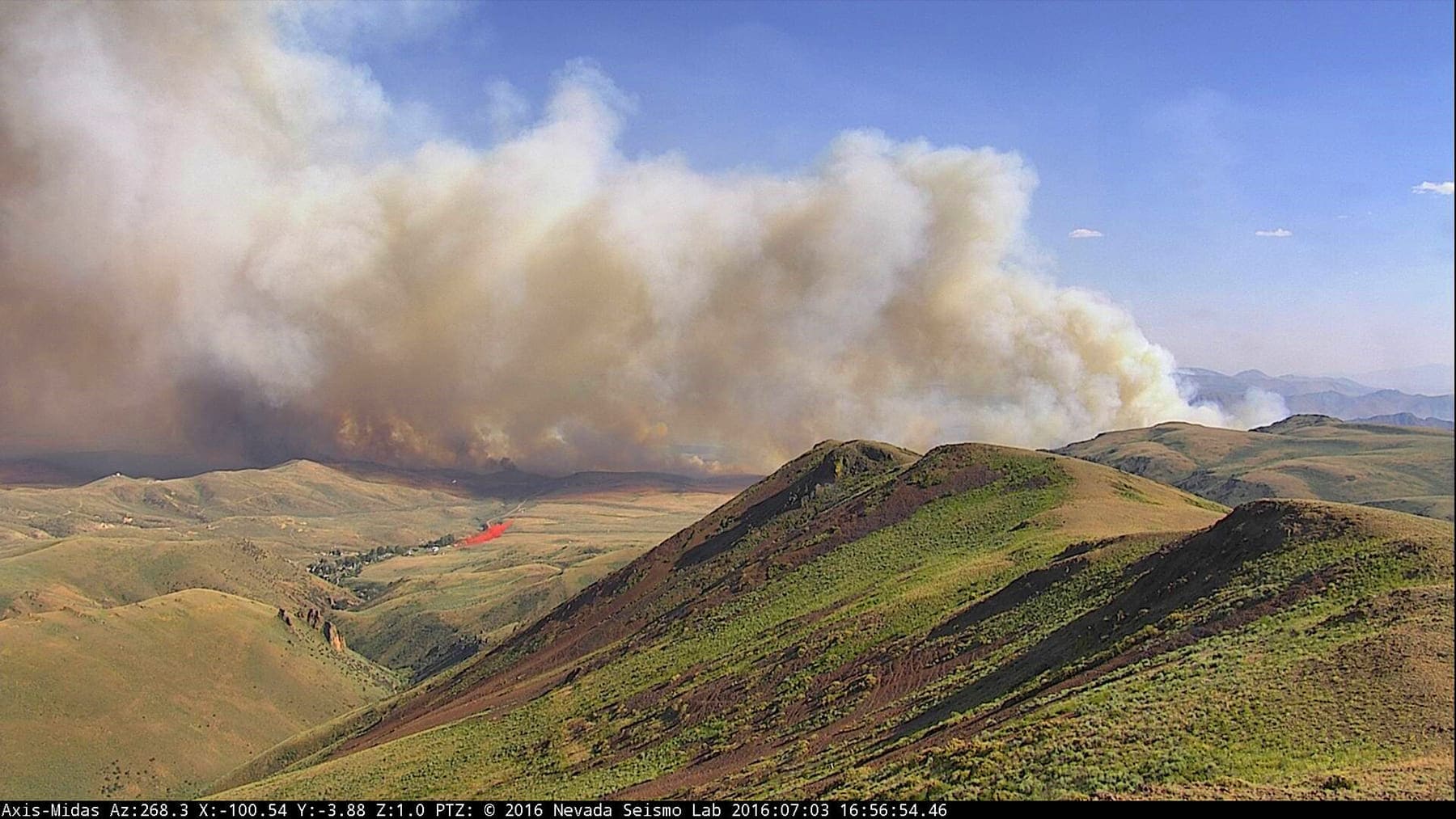
“There isn’t just one approach to protect wildlands and promote quicker recovery from fires; it’s definitely a multi-faceted approach,” Christina Restaino, director of the Living With Fire Program and an assistant professor in the College of Agriculture, Biotechnology & Natural Resources, said.
As a natural resource specialist in the College’s Extension unit, Restaino works with other entities across the state to provide education on how to prepare for and mitigate the detrimental effects of wildfire.
“It requires that we, at minimum, work together to achieve the three principles of the National Cohesive Strategy, which are: Fire Adapted Communities, Safe and Effective Response, and Resilient Landscapes.”
In Nevada, land management agencies have signed onto a shared stewardship agreement and have adopted the Nevada Cohesive Strategy as a guidepost for fire management throughout the region.
“We can’t separate humans from the landscape, so we need to be working to build resilient landscapes to fire through treatments like the BLM and USFS are doing,” Restaino said. “We need to build capacity for firefighting response and proactive fuels treatments, and we need to have communities in the Wildland Urban Interface become adapted to fire through good defensible space, safe places for firefighters to fight fire and evacuation preparedness.”
Restaino’s emphasis is on wildland fire science, forestry and natural resource management. Her research has looked at the intersection of land management and forest resilience to fire, drought and climate change. She has worked extensively in science outreach and communication, translating ecological principles to resource management and forest and fire policy. She focuses on translating scientific information for use in land management and helping to inform the public about pressing ecological issues.
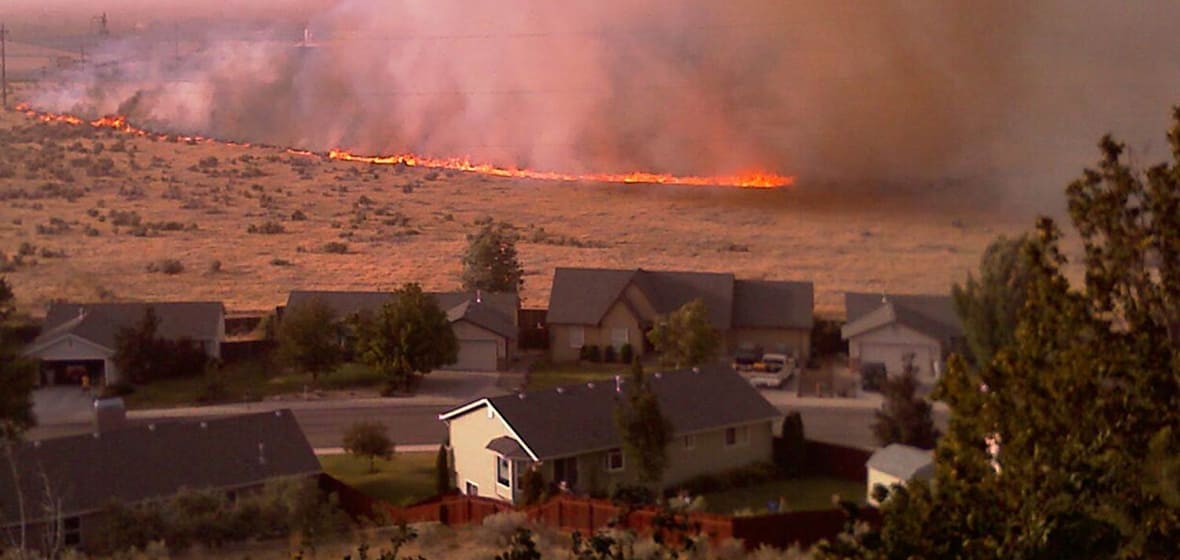
“We work alongside our agency and local fire protection district partners to get peer-reviewed science-based recommendations to residents of Nevada about preparing for wildfire,” she said. “Fire management agencies in Nevada are constantly engaging with scientists to make science-based land management decisions.”
Their annual fire program, Nevada Wildfire Awareness Month is May, this year during a time when everyone is trying to set health boundaries through social distancing and staying at home.
“Wildfires can and will still happen this year, even though people are all locked down at home,” Restaino said.
Erin Hanan

One of those scientists is Erin Hanan, a fire ecologist and assistant professor in the College’s Department of Natural Resources & Environmental Science. Her research focuses on how climate change and management affect wildfire activity in the western U.S. and how shifting fire regimes affect ecosystem processes.
“In recent years, the world has experienced several record-setting wildfires,” she said. “As the frequency of these disasters increases, we need strategies for managing risk. However, our success will depend upon why wildfire activity is increasing in the first place and what factors influence fire behavior at the scales where management is implemented.”
We know that climate change and historical fire suppression are two major factors that are leading to more severe wildfires; though until recently, we’ve only been able to attribute the relative role of these drivers at large scales,” she said.
Hanan, who runs the Fire and Dryland Ecosystems Lab at the University, also conducts research as part of the College’s Experiment Station and has been modeling the extent to which climate change and fuel accumulation promote the spread of severe fires in western U.S. watersheds and which drivers dominate at the scale of actionable management.
“We are finding that the effects of climate change and fuels can vary at fine scales within watersheds, so potential management strategies need to be evaluated in the context of local environmental conditions,” she said.
Recovery from wildfires
Hanan is also working on modeling how quickly ecosystems recover from wildfire, which can range from years to many decades or longer.
“I’m working to forecast how quickly ecosystems recover and how long it takes for the risk of severe wildfire returns in different western U.S. watersheds,” she said. “Preliminary results show that climate warming can increase the rate of recovery in wet regions while slowing recovery in drier ones, even within the same watershed.
In another project, she is collaborating with the Forest Service’s Fire Behavior Assessment Team and Jonathan Greenberg, an associate professor also in the College’s Department of Natural Resources & Environmental Science, to work in the path of advancing wildfires in the Sierra Nevada.
Their team goes into the field with firefighters to take measurements and inventory plants and soils. Once the fire passes through, the team returns to measure its effects.
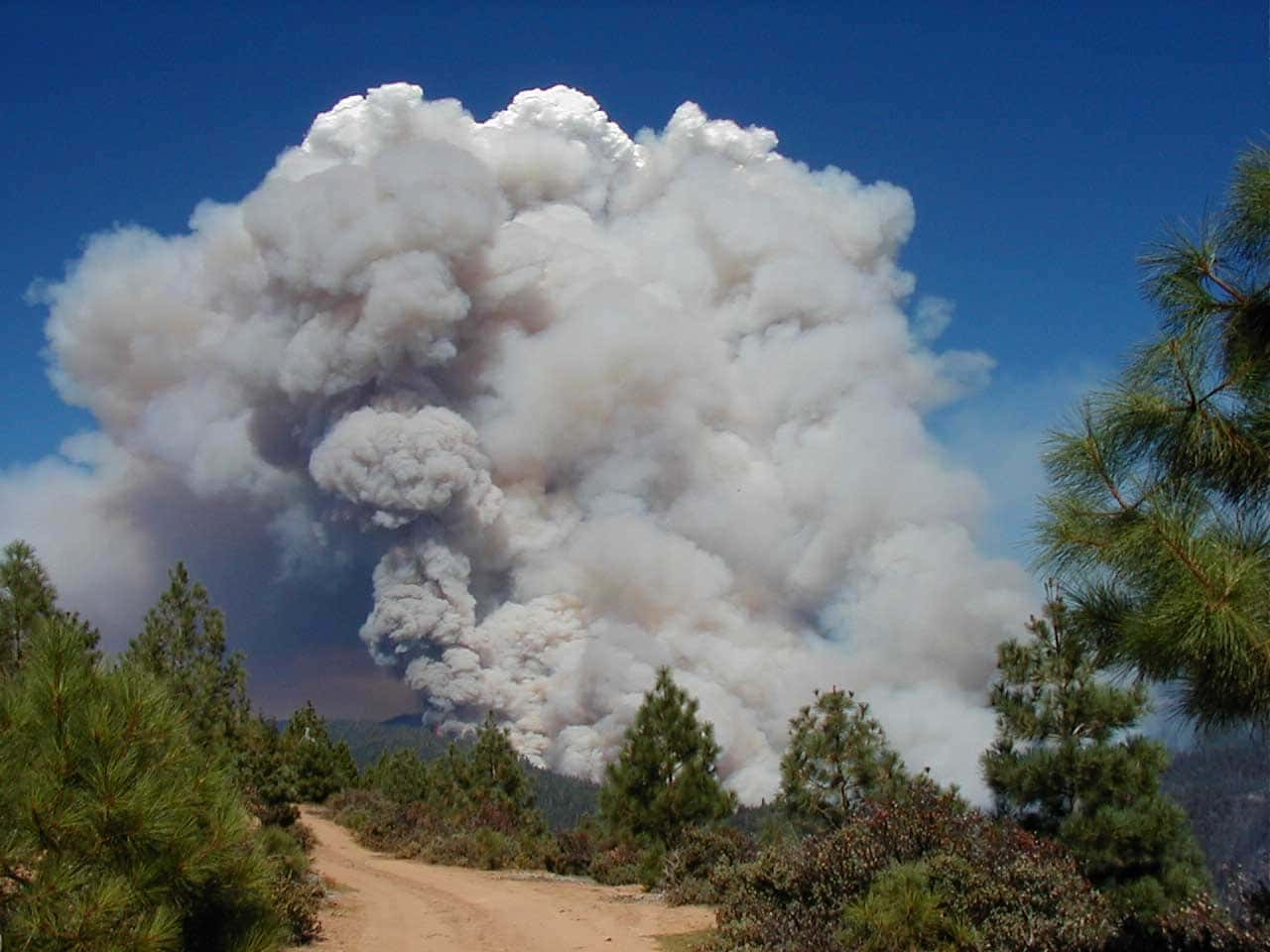
“We are using temperature sensors installed at different depths in the soil profile to examine how fire intensity influences carbon and nitrogen cycling and how ecosystem responses to fire vary along environmental gradients such as soil moisture, vegetation and elevation gradients,” Hanan said.
Preventing catastrophic wildfires
“We have known for many years that fires in the Great Basin are becoming more frequent, larger, and more destructive, and that the direct, rehabilitation and additional miscellaneous costs are getting increasingly out of control,” Payne, dean of the College, said. “The ecological costs are also staggering whether reduced critical habitat, loss of biodiversity, increased invasive species, soil degradation, or altered hydrology. Many economic activities vital to rural communities, including ranching, mining, hunting, fishing and recreation, are also adversely affected.”
As far as preventing catastrophic wildfires, experts agree there is no one-size-fits-all approach. Authors of the U.S. Fourth National Climate Assessment contend that climate warming has increased wildfire severity, and the likelihood of catastrophic fires will continue to increase unless aggressive action is taken to mitigate greenhouse gas production.
There are several management activities that are designed to reduce the occurrence of catastrophic wildfires, such as controlled burns or forest thinning, and legislatures have appropriated a lot of funding to these activities.
“Fuel reduction activities can be very effective in areas with unnaturally high fuel loads, such as in low-elevation pine forests that have experienced extensive fire suppression,” Hanan said. “In the southwestern United States, for example, climate conditions are frequently conducive to fire and so fuel load is the main limiting factor.”
“In other regions however, fire activity is mostly driven by climate conditions and fuel aridity,” she said. “In these systems, fuels grow rapidly and therefore fuel reduction is not a feasible approach for reducing wildfire risk over large areas.
“In wet systems like the Pacific Northwest, fuel loads are naturally high and fire is infrequent because the forests are usually too humid to burn. In these environments, thinning is not likely to be beneficial because extreme fires in the region are more limited by moisture and flammability than they are by fuel load. In these areas, climate change is increasing aridity, which in turn increases the occurrence of catastrophic fires.”
Climate change and silviculture
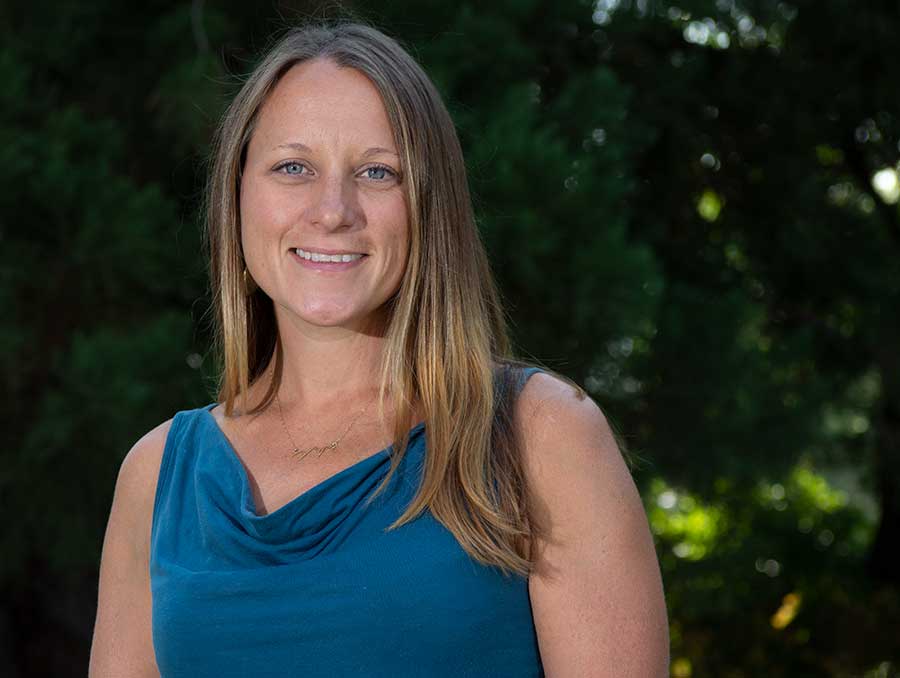
Sarah Bisbing specializes in forest ecology, silviculture (the care and development of forests), forest stand dynamics, forest landscape genetics and global change ecology. She is a forest ecology assistant professor and researcher from the College’s Department Natural Resources & Environmental Science who also conducts research as part of the College’s Experiment Station.
With a multitude of factors – such as catastrophic wildfires – affecting stresses to forests and rangelands, Bisbing steered her research to find solutions to mitigate impacts on the ecological, economic and social services provided by forest ecosystems.
Leading a team of scientists and forest managers, Bisbing is conducting a Sierra Nevada-wide study, the Sierra Nevada Adaptive Management Experiment, known as AMEX, to identify alternative forest management treatments that will improve conifer forest resistance and resilience to climate change. It is a multi-agency project that stretches the length of the Sierra Nevada with forest research plots in varying elevations.
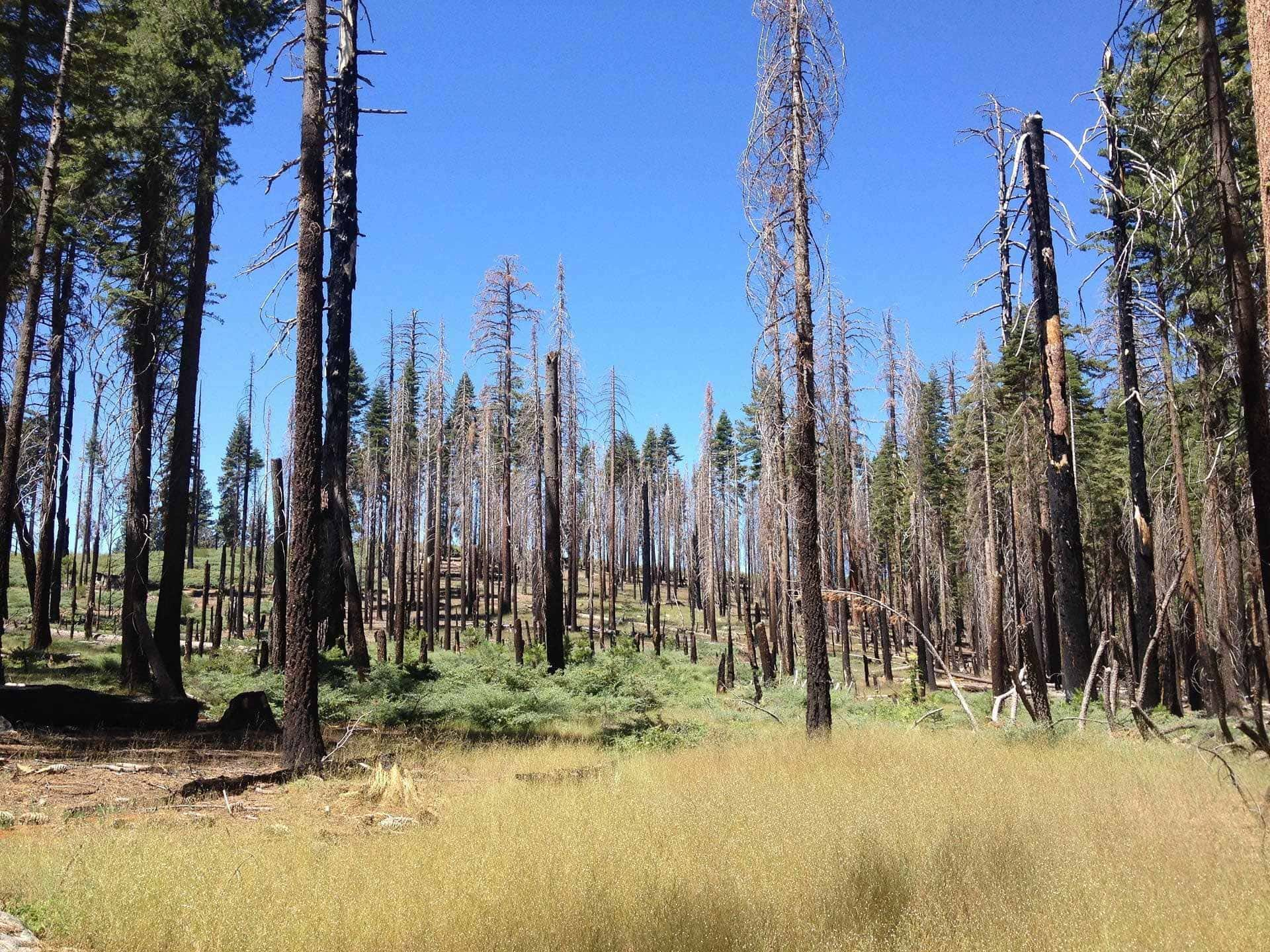
This long-term, multi-decade study will compare treatments representing fundamentally different climate change impact scenarios and a suite of potential approaches forest managers may take to mitigate impacts on the ecological, economic and social services provided by forest ecosystems.
The study was designed by Bisbing and Professors Rob York and Rick Satomi of U.C. Berkeley. It is based on the national Adaptive Silviculture for Climate Change program led by Linda Nagel at Colorado State University. Project collaborators include Jim Kral and Jason Poburko of the California Department of Forestry and Fire Protection and Eric Knapp and Malcolm North of the U.S.D.A. Pacific Southwest Research Station.
Forest health treatments
Forest health improvement treatment types are defined as resilience, resistance and transition treatments and include fuels reduction, pest management, biomass utilization and reforestation coupled with mechanical treatments to provide diversity in species, age classes and structures at the landscape and regional scales.
Resilience treatments closely mimic forest structure under historic fire conditions and are designed to prepare the forest for disturbance by creating tree stand conditions that will help recovery of pre-disturbance composition and structure.
Resistance treatments are aimed at reducing fuel loading and will prepare the forest to resist a disturbance by creating stand structure that is open and park-like and forces fire to stay on the ground.
Transition treatments will help the forest adapt to changing climate, representing the scenario where resistance and resilience treatments are not effective and the forest cannot recover without intervention. Treatments mimic a disturbance that fundamentally changes the composition and structure of the forest, requiring foresters to plant species better adapted to the new conditions of the climate change-impacted system.
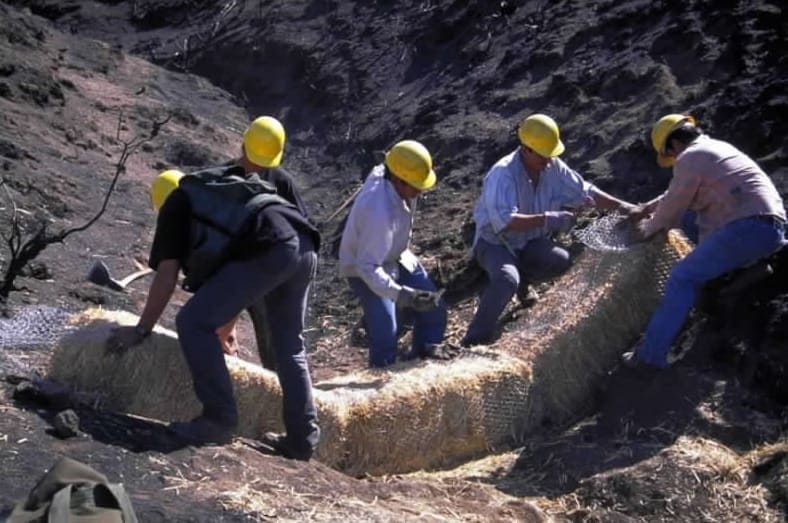
“This research will help inform what forest managers will do in the long run to increase carbon sequestration, combat drought mortality and make forests more resistant and resilient to catastrophic wildfires and insect damage,” Bisbing said. “Climate change is and will be increasing the severity of ecological disturbances in forests, which will not only have devastating impacts on forest ecosystems but also turn these carbon sinks to carbon sources, leading to increases in the release of carbon into the atmosphere. This study will guide forest managers as they build resilience and resistance to those disturbances and attempt to mitigate the impacts of climate change on forest ecosystems.”
Now, without fires, there is a buildup of fuel. Couple that with warmer temperatures and dried out vegetation because of climate change, along with more communities being built in forested areas, and all the main components that lead to wildfires are in place across the West.”
Teaching the experts
Knowing how to care for Nevada's land before and after it is affected by fire and other disturbances is a key to reducing wildland fire risk and repairing lands after a fire.
Fire operations managers, such as those in the Bureau of Land Management in Nevada that sustains lands, water and wildlife, work to change how fire behaves to protect Nevada’s rangelands. They look to science to help guide them.
A partnership in the spring of 2019 between the BLM and the University of Nevada, Reno created an educational endeavor called the Rangeland Ecology & Management Program. Program classes include Rangeland Vegetation Measurements, Soil Science, Range & Forest Plants, and Wildlife Ecology & Management courses, among others.
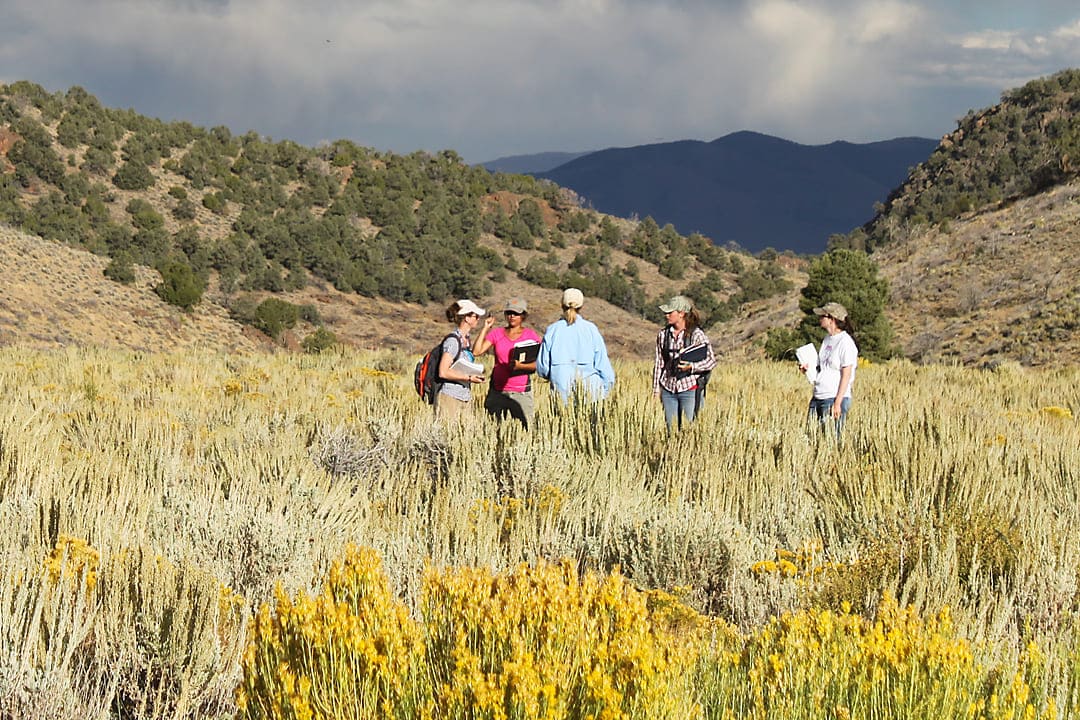
"What's better to teach Nevada land issues than the University of Nevada, Reno," Paul Petersen, BLMs Nevada State Fire Management Officer, said. "It already has a large knowledge base of Great Basin and Nevada issues, climatology and range types. And it's a great opportunity to partner with a land-grant university. We're a land management agency."
Professor Tamzen Stringham and rangeland ecologist Devon Snyder, both in the College’s Department of Agriculture, Veterinary & Rangeland Sciences who also conduct research as part of the Experiment Station, put the curriculum together for the program. They taught the program’s first course, Rangeland Resource Management, at the Bureau’s office in Carson City to wildland firefighters. Most worked right here in Nevada. All were from a federal agency fire program, some in neighboring states.
"We had 36 students, and all were professional and highly engaged," Stringham said.
All studied the changes that happen over time on and below the Earth's surface; how soil develops; how to identify plants; how soil, climate and plants interact to form ecosystems; and how arid-land ecosystems respond to disturbance events.
While programs for specialists who work in forested areas already existed, a training for arid-land professionals didn't. The training Petersen had asked Stringham to develop was a novel one.
"This is the first one that's focused on Great Basin and high-desert ecology and fire ecology, which is important for our firefighters because that's where they work," Petersen said. "We're really excited about this partnership."
Management in forests and rangeland is generally very different, but the reliance on science is necessary for both.
Great Basin Fire Exchange
The Great Basin's unique sagebrush-steppe ecosystem is in decline due to a variety of factors, such as invasive species, piñon and juniper tree encroachment and expansion, multiple anthropogenic uses, climate change and severe wildfire. All of these factors are threatening grasslands and shrublands globally.
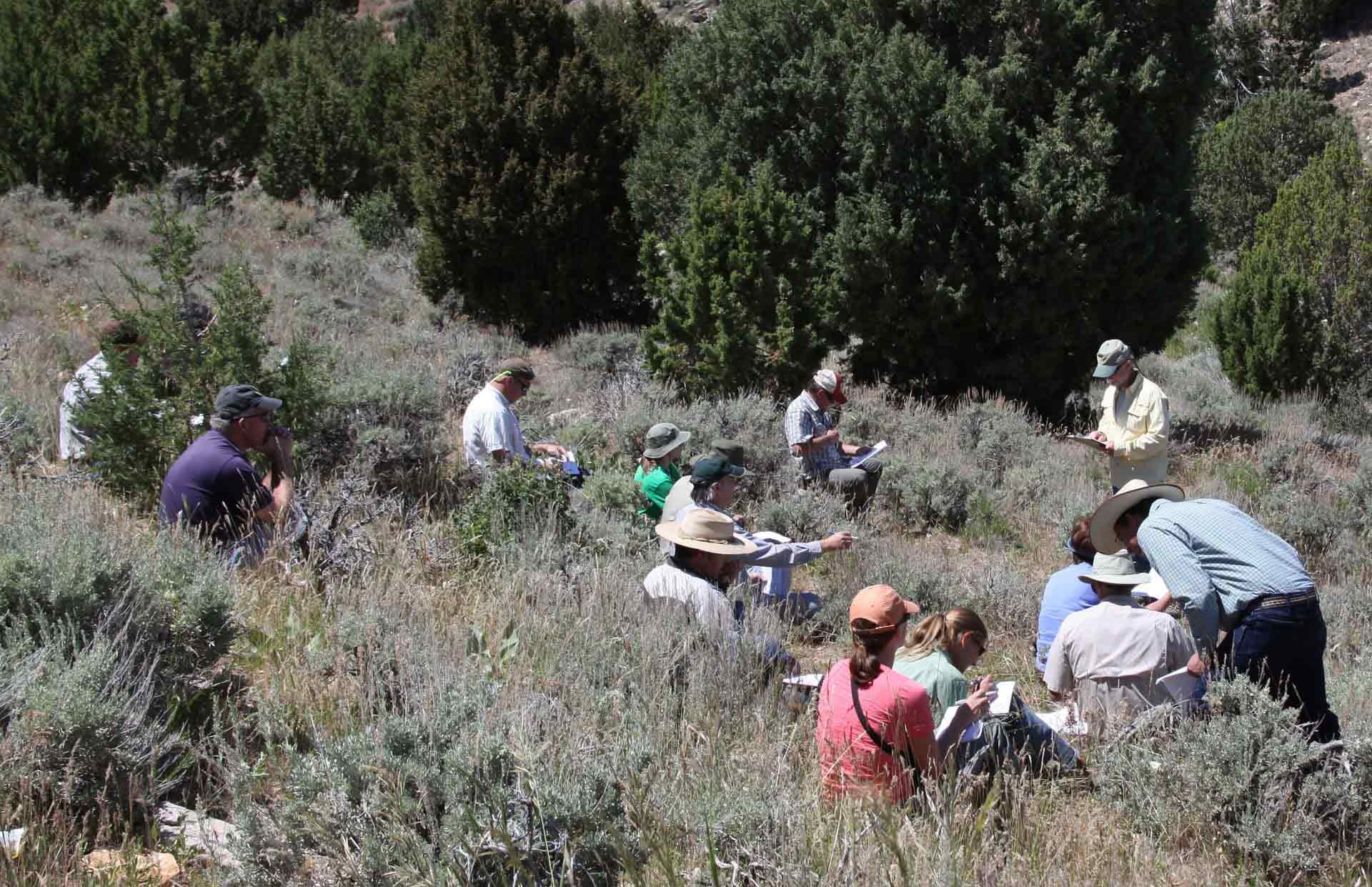
To keep scientists and land managers connected, the Great Basin Fire Exchange, based at the University of Nevada, Reno, works to facilitate the flow of the latest science and science needs to the fire, fuels and restoration science and management community.
“The main way we connect scientists and land managers is through our activities - field workshops, webinars, in-person trainings and online courses,” said Génie MontBlanc, manager of the Fire Exchange, and faculty in the College of Science. “And we receive consistent positive feedback about our monthly newsletter that has almost 900 researcher and manager subscribers. People also reach out to me directly to ask questions, and I connect them to experts who can help them answer their questions.
“Managers need the latest information and tools to address the most important issues in the Great Basin. And yes, land managers apply the latest information and tools on the ground, to the extent that they are applicable to their particular challenges.”
Those management challenges include:
- Fuels and vegetation management decisions about locations, methods and conservation tradeoffs
- Post-fire treatment decisions, such as seeding methods and species mixtures
- Weed management, such as locations, timing and methods
- Grazing guidelines for post-fire grazing and targeted grazing to reduce fuels
- Landscape prioritization, which uses geospatial analyses and mapping
“We receive questions or stated needs from our region's land managers/practitioners, then we develop products or activities that synthesize the science to answer the questions and meet the needs,” said MontBlanc, who has been with the Fire Exchange since it began in 2010 in the Department of Natural Resources & Environmental Science. “These products and activities are often developed or led by research and management teams, then we advertise through our newsletter and partner agency channels to distribute the information and/or bring everyone together.”
The project is governed by a 12-person steering committee and a 10-person advisory committee made up of researchers and managers from various agencies and institutions across the five states that make up the Great Basin: Nevada, Utah, Idaho, Oregon and California.
“The committees come together regularly to discuss management needs and plan activities to meet those needs,” MontBlanc said. “We then reach out to subject experts, sometimes within but more often outside our committee groups, to lead those activities. So far, all of our activities have been open to the public, but our primary audience is land managers/practitioners and researchers.”
The Great Basin Fire Science Exchange is one of 15 regional fire science exchanges sponsored by the national Joint Fire Science Program.
“This project aims to fill any communication gaps between scientists and managers, so that we all know what works, what doesn't, and what we still need to know about managing fires in the Great Basin,” Elizabeth Leger, professor of biology and lead project manager for the Great Basin Fire Science Exchange, said. “We have been doing this for 10 years and are going strong”



